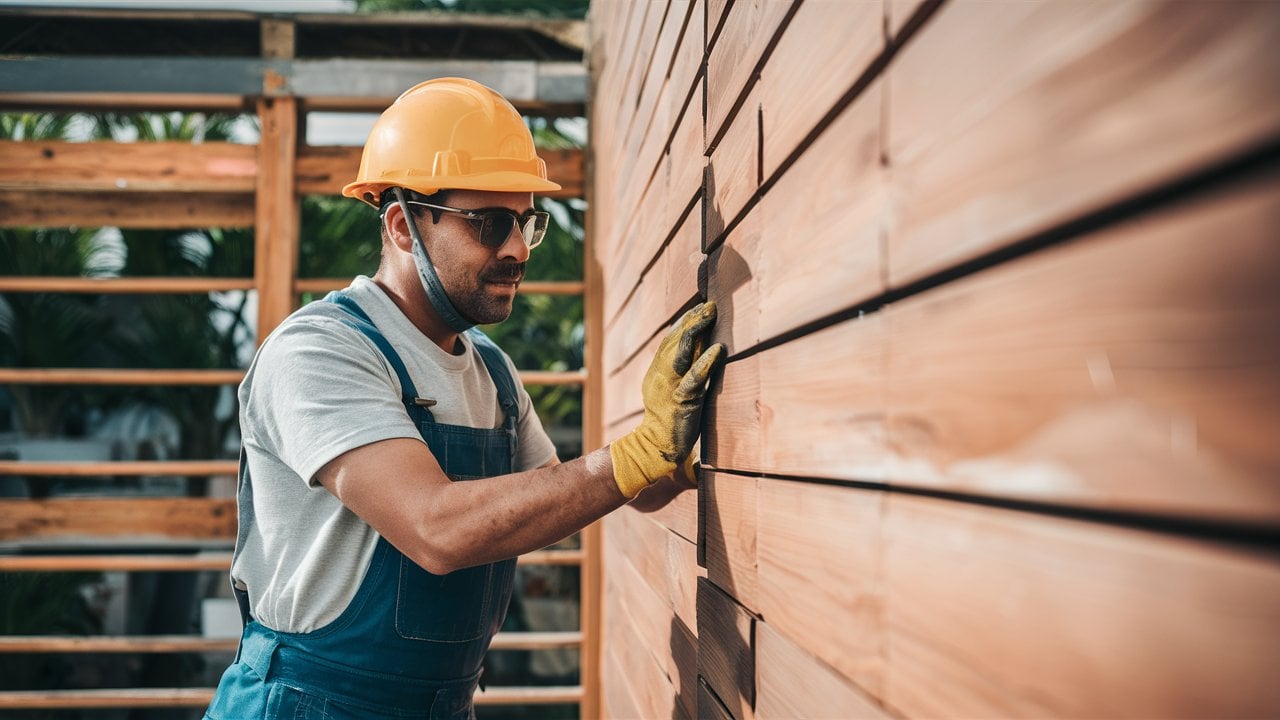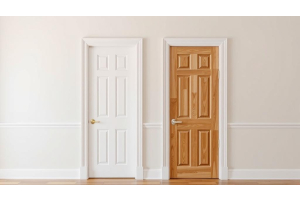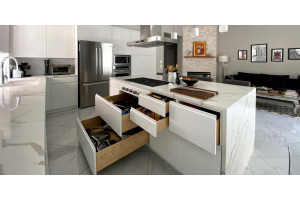
Installing wall panels with adhesive is a popular method for enhancing your space with a sleek, finished look, especially when working with materials like wood veneer for walls.
Whether you’re renovating a room or exploring fresh interior wall covering ideas, this technique offers a clean, seamless finish and can be done without the need for nails or screws. It’s particularly effective when installing wall panels over drywall, allowing you to refresh a room without extensive demolition or reconstruction.
First, measure and cut your panels to fit the desired wall space. Clean and prep the surface, then apply a construction-grade adhesive evenly to the back of each panel, using about one ten-ounce tube per four to six square feet, depending on panel size and material.
Press the panel firmly into place, holding it for thirty to sixty seconds to ensure a strong bond. Allow the adhesive to cure as instructed before continuing with adjacent panels.
Knowing how much adhesive for wall panels you need will help you avoid delays during installation. Typically, you'll need multiple tubes depending on your total wall area and the weight of the panels, especially when using heavier materials like MDF or wood veneer.
What Are Wall Panels?
A wall panel is a square piece of veneer, wood, metal, or plastic that you can use to cover walls. When multiple wall panels are combined, they offer an interesting and aesthetic alternative to drywall.
Now, there are different types of wall panels in terms of material, design, and price. For example, there are horizontal wall covers and vertical wall covers; they can also vary in size, textures, and color combinations.
How to Install Panels Without Adhesive
Installing wall panels with adhesive can be easy, but it's not long-lasting because the glue wears off over time. This is why installing the panels without adhesive is a good idea–it takes a bit longer to install them this way, but it's worth the effort.
Step One: Measuring and Shopping
The first step to installing wall panels is to measure your wall and determine its square footage. You can do that simply by multiplying the height of the wall by its length. Make sure you subtract the area of any doors and windows.
The square footage of your wall will help you determine the amount of wall panels you need. Note that wall panels come in large sheets and you will have to cut them into smaller pieces manually. You can get them cut by a carpenter, but that will cost you some extra bucks, so we don't advise you to do so unless you're short on both time and experience.
Step Two: Cutting the Panels
Once you've brought the sheets home, put them against the walls and check if they are the right size. If they roughly seem the right size, it's time to start cutting so you can adjust them to the shape of your wall.
First, use a pencil or a marker to outline your cutting marks. Next, arrange any of the following cutting tools:
- Electric jigsaw
- Junior hacksaw
- Circular saw
- Table saw
- Handheld saw
- Scissors
- Clippers
Notice that although it's easy to cut these sheets, it's a good idea to practice your cutting skills on a rough sheet. Slight imbalances while cutting won't show, but if you fail to cut symmetrically, the wall panels will be difficult to fix.
Experts recommend using a circular saw with electric brake cuts, as this tool is lightweight and easy to handle–you can maneuver it easily and learn to handle it like a pro in no time. Overall, the cutting process should take you between two and five hours.
Step 3: Nailing or Screwing the Panels
This is the most effort-demanding step. You'll need a hammer and nails if you wish to fix the panels on a wood wall. But if you wish to fix them on drywall, you will need screws.
Wear proper protective gear and make sure you clean the walls before nailing or screwing your panels to the wall.
If you're deciding between wall panels and wallpaper for your next home project, check out this article comparing their durability, maintenance, aesthetics, and cost-effectiveness to help you choose the best option for your space.
FAQs
Should I Opt for Nail or Glue Paneling?
It depends on your goals. If you want to save time and want a quick, temporary solution, it's best to go with glue paneling, but if you want the wall panels to stay in their place for as long as you want, nail them!
Can I Install Wall Panels Over Drywall?
Yes, you can! However, keep in mind that when you place wall panels over drywall, the walls will become thicker. This might be a problem if you’re short on space.
Wondering if you can paint wall panels? Check out our latest post!






